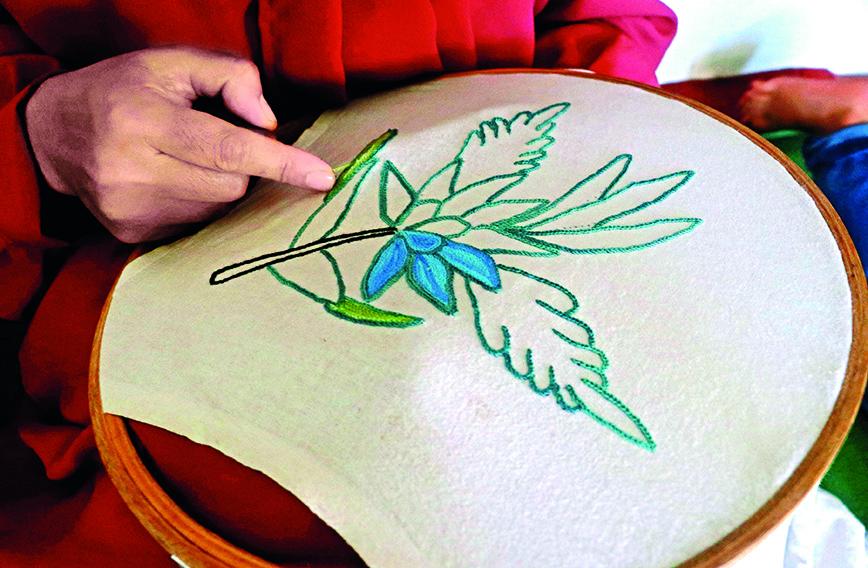Sumita Ghose

SUMITA GHOSE
IT’s a no-brainer. The cultural and creative industries have the potential to not only ensure regular work and employment for rural women and men in India, they are also kind to mother earth as they gobble less energy, being powered by people. These industries include handmade crafts for everyday use as well as for decorative purposes at festivals, weddings, folk dance or drama.
In the past, carpenters, ironsmiths and others made tools for farming and looms for weavers, and were kept busy most of the year, like the potters. With the introduction of tractors, threshers and other heavy machinery, most of them have lost local markets. A similar situation applies to handloom weavers, block printers and tie-dye artisans, who have lost local customers to cheaper mill-made, machine-printed fabric, and to export surplus knitwear — T-shirts and trousers for men which are comfortable, inexpensive and good for daily wear.
The good news is that globally handmade is acquiring premium status, especially in Europe and North America. Similarly, the band of conscious customers is growing in large cosmopolitan cities in India and parts of Latin America.
So how does one link the two — makers and buyers?
Post-Independence, the government, spearheaded by stalwarts like Kamladevi Chattopadhyay, set up several institutions to promote handloom and handicrafts in rural areas. The Development Commissioner (Handloom & Handicrafts), the National Institute of Design, and the State Emporiums helped rural craftspeople access urban markets.
The Khadi and Village Industries Board continues to make herculean efforts, working right through the chain, empowering spinners, weavers, and tailors to make products. It has opened khadi outlets in virtually every block in the country so that people can buy affordably priced khadi products.
In the private sector, Fabindia has been the most impactful. It has built a community of craft lovers, and made a large variety of crafts accessible and cool to a large number of Indians, old and young. On the supply side, they have worked closely with handloom weavers and block printers and helped hone their skills to keep pace with the growing market demand as the middle class grew with liberalization and more employment opportunities.
To cater to the export market, a lot is already happening in the field of textiles. Garment factories and units have sprung up around large metros and smaller towns, over the past 30 years. These have catered to mostly fast fashion. Some are owned by designers, and recently backed by business houses, catering to high-end boutiques in India and across the world.
Despite the above and efforts by social enterprises like Dastkar, SEWA, URMUL Trust, we have seen the number of active artisans dwindle over the years. While many fortunate artisans have educated themselves and their children and switched to other aspirational occupations in towns and cities, many others have been forced to migrate out of their villages, working at manual unskilled jobs on a temporary or permanent basis.
So here’s what is required to get hand work and craft back to where it deserves to be — aspirational to the maker and the wearer or user.
Investment by the government through panchayats could be in the following:
1. At the block or district level: Allocating land, buildings and appropriate technology to enable a hub for promotion of handloom or handmade crafts. For textiles, this would include a yarn bank, dyeing facilities, and an appropriate effluent treatment plant to ensure that land and water sources do not get polluted.
2. Access to designs, information on bazaars, including the government’s online procurement marketplaces.
3. Help in formation of weaver societies, and making available low-cost credit to these societies.
4. Provision of hands-on training (preferably on the job) to weavers in design and product development, in costing, production planning and quality checks at each stage.
5. Links upward to local and national level textile (whether garment or home furnishing) retailers and exporters. While the textile industry is huge, a majority of the fabric exported is made in mills. This makes sense from a national and global point of view in terms of production timelines, but it translates into work for a fewer number of weavers, and larger income disparities within the industry. If more textiles were handwoven, it would give work to a larger number of weavers, and would also ensure year-round work for weavers, leading to increased incomes.
6. Private sector aggregators, wholesalers, retailers could step in and provide the necessary support at different stages of the supply chain to ensure that products are of the standards required by the contemporary customer.
At Rangsutra, where we work right across the chain to take products made by rural artisans to the market, we have seen that with the right inputs in product development, design, appropriate technology — like solar powered looms for weaving plain or striped fabric — and explaining what the customer wants, handloom and handicrafts have gone a long way in ensuring regular work for our 2,000-plus artisans. This includes a large number of women who do hand embroidery, leaving their indelible handprint on cushion covers and home furnishings and, of course, on apparel — which makes it special for the conscious customer.
This customer knows that this means work for rural women, who may not have access to machines to do machine embroidery but are proud to leave their signature hand work on each item they make.
The fact that most of the artisans are also shareholders in Rangsutra means that they understand the value of their work and aspire to take their craft to greater heights, and to customers all around the world. Now it’s time for buyers and customers to step up and consciously decide to buy and wear consciously crafted clothes and home décor.
Sumita Ghose is founder-director of Rangsutra Crafts
Comments
Currently there are no Comments. Be first to write a comment!




